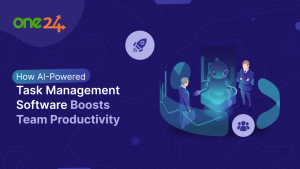For most companies, HR is the behind-the-scenes engine that keeps things running smoothly. But it’s frequently flying blind. For high-speed organizations, HR managers are responsible for energizing everything from employee participation and compliance with regulations to headcount planning and turnover. But without the right information delivered at the right time, even the most experienced HR leaders are merely reacting to problems instead of looking ahead and preventing them.
The problem is that far too many businesses rely on outdated or infrequent reports as the foundation for their HR operations. Problems like rising absenteeism, project backlogs, and abrupt resignations frequently go unnoticed until it’s too late if contemporary HRMS software isn’t used. HR must use data-driven insights that are provided weekly, not just monthly or quarterly, in order to be a true strategic partner to the company.
Here’s where regular, powerful HR reporting is useful. HR managers can remain proactive, align with organisational goals. And increase the strategic value they contribute by monitoring just five key reports each week.
1. Attendance and Punctuality Report
Why it matters: Frequent absences and lateness affect the morale of team members, client deliverables, and payroll accuracy as well as individual performance. Yet most managers notice trends only after it’s too late.
What to track:
- Daily sign-in/sign-out times
- Unplanned absences
- Late logins by department/team
- Patterns of short leaves or habitual latecomers
Benefit: Weekly monitoring of this report aids in the early detection of attendance-related problems. HR can help managers have evidence-based discussions. Ensure that policies are applied fairly, and step in before things get out of hand.
2. Open Positions and Hiring Status Report
Why it matters: Vacancies cause unbalanced workloads, project delays, and missed revenue opportunities. Bottlenecks subtly erode performance unless HR is aware of what’s happening in hiring in real time.
What to track:
- Number of open roles per department
- Status (screening, interview, offer)
- Time-to-hire for each position
- Candidate pipeline drop-off rates
Benefit: HR can focus on high-priority roles, align recruiters with business needs, and ensure the recruitment machine is running smoothly with the assistance of a weekly hiring report. It also encourages accountability by keeping hiring managers in the loop.
3. Employee Engagement Indicators
Why it matters: Disengaged employees sometimes stick around and quietly reduce their effort instead of quitting immediately. HR may miss the warning signs of declining morale, which affect everything from customer satisfaction to innovation, if engagement audits are not done on a regular basis.
What to track:
- Pulse survey results
- eNPS (Employee Net Promoter Score) trends
- Participation in internal events or training
- Feedback or sentiment from internal channels
Benefit: Weekly engagement monitoring enables HR to respond with interventions such as manager coaching, team-building, or career growth planning in time to spot morale dips early.
4. Compliance and Policy Violation Report
Why it matters: Even a minor infraction can result in fines or harm to one’s reputation in sectors like finance, manufacturing, or information technology that have stringent regulatory requirements. HR is always prepared for audits thanks to weekly reviews.
What to track:
- Expired contracts or certifications
- Missed mandatory training
- Policy infractions (e.g., code of conduct violations)
- Unresolved grievances
Benefit: HR teams can prevent last-minute scrambles before audits, identify red flags early, and foster an accountable and transparent culture by using a weekly compliance snapshot.
5. Resignation and Attrition Trends
Why it matters: One of the most costly HR problems is attrition. HR has already wasted time and talent if it only examines exits on a quarterly basis. Real-time patterns are discovered through weekly monitoring.
What to track:
- New resignation submissions
- Department-wise attrition rates
- Resignation reasons (as per exit interviews)
- Early turnover (employees leaving within 3–6 months)
Benefit: With timely resignation data, HR can re-engage at-risk talent, conduct stay interviews, and spot workload or team-specific issues before they become more serious.
Make Data Actionable
Weekly reporting is not about inundating inboxes with spreadsheets. The true worth occurs when these reports are converted into actions. Current HRMS software, such as One24 or others, can automate such reporting, include real-time dashboards, and even send alerts on the fly based on specific thresholds. This allows the HR to concentrate on strategic interventions and not merely on monitoring numbers.
By looking at these five reports on a constant basis, HR managers get a crystal clear view of the workforce dynamics and can assist their leadership with recommendations based on facts and behave as enablers of change, not administrative facilitators.
The Conclusion
The future of HR is anticipation, not reaction. In the age of business agility, waiting for end-of-month dashboards or post-mortem analysis is simply no longer sufficient. By incorporating weekly reporting as a part of the HR process, organizations empower their people teams to make more informed, faster decisions. A minimal shift in tempo, but one that yields dividends in retention, productivity, compliance, and ultimately, business growth.
One24 assists HR in becoming a proactive force in your company, whether that be through monitoring employee engagement, overseeing compliance, or predicting labor trends.
To discover how One24 can revolutionize your HR operations, schedule a free demo right now.
Contact us with any questions or to learn more.







